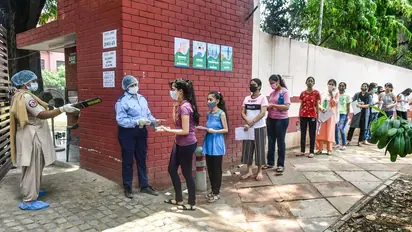DU admission 2022: 2nd merit list released at admission.uod.ac.in; know how to check, important dates & more

Synopsis
The University of Delhi (DU) has issued the second allotment list for admission to its undergraduate programme. The candidates can check the second allotment list on the official website- admission.uod.ac.in.
The University of Delhi (DU) released the round 2 seat allocation list on October 30. The official website, admission.uod.ac.in, has the list of seats allocated for Round 2. Candidates have from October 31 at 10 a.m. until November 1 at 4:59 p.m. to accept the seat that has been given to them.
Colleges will review the online applications from October 31 to November 2. By November 3, 4:59 PM, the entry fee must be paid online. On November 4, the third round of undergraduate admissions to Delhi University will start.
To check the merit list candidates can visit the official website and enter their Login credentials in the login link.
Also Read | MHT CET 2022 Counselling: CAP Round 2 seat allotment result to be released today; know website, steps here
Step 1: Visit the Delhi University Admission 2022 Portal
Step 2: Click on the Candidate Registration Link
Step 3: Enter the CUET Application Number and Password to Login
Step 4: Download the DU 2nd Merit List for further reference
The university had previously said that each course in each college will reserve 20% more seats for applicants from the unreserved categories of OBC-NCL and EWS, as well as 30% for those from the reserved categories of SC, ST, and PWBD, in the first round of seat distribution.
If candidates are facing any issues with DU UG admission 2022 then they can call on- 011-27006900 or write emails to- ug@admission.du.ac.in.
Also Read | Tripura NEET UG Counselling 2022: Round 1 allotment result announced; check steps, details here
For the first time at Delhi University, scores from the Common University Entrance Test (CUET) are being used to determine admission to 79 undergraduate programmes spread over 67 colleges, departments, and centres.
Admissions were formerly made on school merit lists based on Class 12 grades, which witnessed rising cut-offs, until last year. Up to seven cut-off lists were formerly made public by the institution each year.
Stay updated with the latest Education News and Career News, including exam notifications, results, admissions, and job alerts. Get expert tips on higher education, government exams, and skill development to boost your career growth. Explore updates on scholarships, study abroad opportunities, and recruitment trends. Download the Asianet News Official App from the Android Play Store and iPhone App Store to stay ahead in education and career planning.